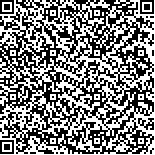| This Paper:Browse 942 Download 0 |

码上扫一扫! |
| Brain–computer interfaces for human gait restoration |
| ZoranNenadic |
|
|
| (Department of Biomedical Engineering, University of California, Irvine 92697, CA, USA;
Department of Electrical Engineering and Computer Science, University of California, Irvine 92697, CA, USA) |
|
| 摘要: |
| In this review article, we present more than a decade of our work on the development of brain–computer interface (BCI)
systems for the restoration of walking following neurological injuries such as spinal cord injury (SCI) or stroke. Most of
this work has been in the domain of non-invasive electroencephalogram-based BCIs, including interfacing our system with
a virtual reality environment and physical prostheses. Real-time online tests are presented to demonstrate the ability of
able-bodied subjects as well as those with SCI to purposefully operate our BCI system. Extensions of this work are also
presented and include the development of a portable low-cost BCI suitable for at-home use, our ongoing efforts to develop a
fully implantable BCI for the restoration of walking and leg sensation after SCI, and our novel BCI-based therapy for stroke
rehabilitation. |
| 关键词: Brain–computer interfaces · Neuroprosthesis · Spinal cord injury · Paraplegia · Gait |
| DOI:https://doi.org/10.1007/s11768-021-00070-y |
|
| 基金项目:This work was partially supported by the National Science Foundation (award # 1646275) and the National Institute of Health (project # R01HD095457). |
|
| Brain–computer interfaces for human gait restoration |
| Zoran Nenadic |
| (Department of Biomedical Engineering, University of California, Irvine 92697, CA, USA;
Department of Electrical Engineering and Computer Science, University of California, Irvine 92697, CA, USA) |
| Abstract: |
| In this review article, we present more than a decade of our work on the development of brain–computer interface (BCI)
systems for the restoration of walking following neurological injuries such as spinal cord injury (SCI) or stroke. Most of
this work has been in the domain of non-invasive electroencephalogram-based BCIs, including interfacing our system with
a virtual reality environment and physical prostheses. Real-time online tests are presented to demonstrate the ability of
able-bodied subjects as well as those with SCI to purposefully operate our BCI system. Extensions of this work are also
presented and include the development of a portable low-cost BCI suitable for at-home use, our ongoing efforts to develop a
fully implantable BCI for the restoration of walking and leg sensation after SCI, and our novel BCI-based therapy for stroke
rehabilitation. |
| Key words: Brain–computer interfaces · Neuroprosthesis · Spinal cord injury · Paraplegia · Gait |

